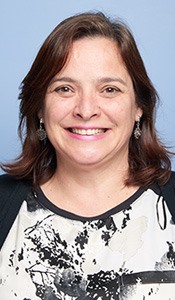Program Information
Development of An ImageJ Plugin for Renal Function Quantification: RenalQuant
A Marques da Silva*, L Narciso , PUCRS, Porto Alegre, RS, Brazil
Presentations
WE-D-204-7 (Wednesday, July 15, 2015) 11:00 AM - 12:15 PM Room: 204
Purpose: Commercial workstations usually have their own software to calculate dynamic renal functions. However, usually they have low flexibility and subjectivity on delimiting kidney and background areas. The aim of this paper is to present a public domain software, called RenalQuant, capable to semi-automatically draw regions of interest on dynamic renal scintigraphies, extracting data and generating renal function quantification parameters.
Methods: The software was developed in Java and written as an ImageJ-based plugin. The preprocessing and segmentation steps include the user’s selection of one time frame with higher activity in kidney’s region, compared with background, and low activity in the liver. Next, the chosen time frame is smoothed using a Gaussian low pass spatial filter (σ = 3) for noise reduction and better delimitation of kidneys. The maximum entropy thresholding method is used for segmentation. A background area is automatically placed below each kidney, and the user confirms if these regions are correctly segmented and positioned. Quantitative data are extracted and each renogram and relative renal function (RRF) value is calculated and displayed.
Results: RenalQuant plugin was validated using retrospective 20 patients’ 99mTc-DTPA exams, and compared with results produced by commercial workstation software, referred as reference. The renograms intraclass correlation coefficients (ICC) were calculated and false-negative and false-positive RRF values were analyzed. The results showed that ICC values between RenalQuant plugin and reference software for both kidneys’ renograms were higher than 0.75, showing excellent reliability.
Conclusion: Our results indicated RenalQuant plugin can be trustingly used to generate renograms, using DICOM dynamic renal scintigraphy exams as input. It is user friendly and user’s interaction occurs at a minimum level. Further studies have to investigate how to increase RRF accuracy and explore how to solve limitations in the segmentation step, mainly when background region has higher activity compared to kidneys.
Funding Support, Disclosures, and Conflict of Interest: Finnancial support by CAPES
Contact Email:


